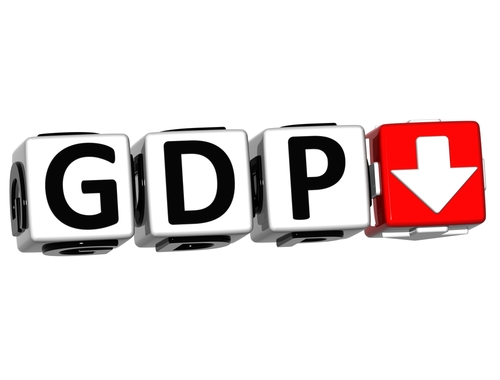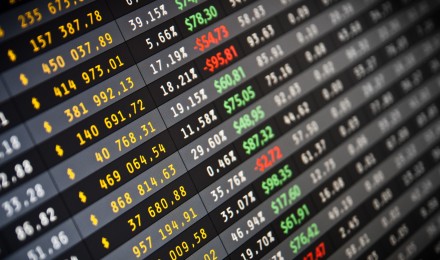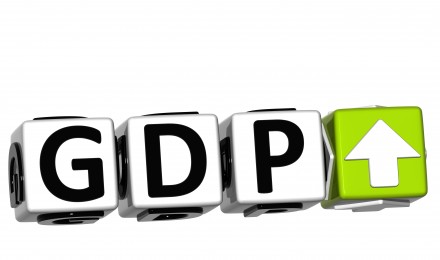From the first quarter of 2012 through the second quarter, the gross domestic product (GDP) increased by 1.5%, according to recent data compiled by the Bureau of Economic Analysis. The growth rate is still below the level required to pull the economy out of its lackluster performance.
The Commerce Department adjusted its numbers for O1, stating that the economy actually grew at a 2% annual rate, revised from 1.9%.
The GDP measures the output of goods and services within U.S. borders.
Weakness Growth Rate since Q3 2011
The 1.5 percent growth rate registers as the lowest rate of economic expansion since the third quarter last year when the economy grew at a 1.3 percent clip. The weak growth rate has a direct correlation with consumer spending. In Q2, consumer spending grew at under 1.5 percent compared to 2.4 percent in Q1.
Americans spent less on services, computers and automobiles. Spending on durable manufactured goods felled to 1.0 percent after an 11.5 percent increase in the first quarter. In the U.S., consumer spending accounts for 70 percent of GDP.
Government spending felled more than half from 3.0% in the first quarter to an annual rate of 1.4% in the second.
The Commerce Department adjusted its growth estimates for the three prior three years. In 2009, the economy grew at an annual rate of 3.5% instead of 3.1% originally reported. Commerce revised the 2010 growth rate down from 3% to 2.4% and adjusted 2011 rate up from 1.7% to 1.8%.
Business Spending and Exports
Business spending presents good news. The purchase of business software and equipment grew at an annual rate of 7.2% compared to 5.4% in the first quarter. The pattern of import/export continued as the U.S. imported more goods and services than it exported increasing from 4.4% in Q1 to 5.3% in Q2. This trade imbalance reduces GDP.
Sluggish Growth for the Remainder of 2012
Economic expansion at a rate of 2% or less does not create jobs at the pace necessary for a healthy economy. The current unemployment rate has hovered at 8.2% for the past few months. The consensus among most economists is that the financial crisis in Europe and the problematic U.S. budget will hamper economic growth in the U.S. If Congress does not reach a budget agreement before the end of the year severe spending cuts and tax increases will take effect.
Earlier in the year, economists displayed more optimism about the economy as many predicted that the economy would expand faster during the second half of the yea. Many based their outlook on positive numbers in business spending, home sales and low gas prices.
However, uncertainty about economic conditions has made many consumers cautious when it comes to spending. In addition, the economy has not created jobs at the same pace as the first quarter of 2012 with employment growth averaging 75,000 per month (Q2) versus 226,000 (Q1), as reported by the Bureau of Labor Statistics.
The U.S. economy needs to expand at an annual rate of 3% to create jobs, according to a CNN Money article. Consumer spending also needs to grow at 3% annually.
From the first quarter of 2012 through the second quarter, the gross domestic product (GDP) increased by 1.5%, according to recent data compiled by the Bureau of Economic Analysis. The growth rate is still below the level required to pull the economy out of its lackluster performance.
The Commerce Department adjusted its numbers for O1, stating that the economy actually grew at a 2% annual rate, revised from 1.9%.
The GDP measures the output of goods and services within U.S. borders.
Weakness Growth Rate since Q3 2011
The 1.5 percent growth rate registers as the lowest rate of economic expansion since the third quarter last year when the economy grew at a 1.3 percent clip. The weak growth rate has a direct correlation with consumer spending. In Q2, consumer spending grew at under 1.5 percent compared to 2.4 percent in Q1.
Americans spent less on services, computers and automobiles. Spending on durable manufactured goods felled to 1.0 percent after an 11.5 percent increase in the first quarter. In the U.S., consumer spending accounts for 70 percent of GDP.
Government spending felled more than half from 3.0% in the first quarter to an annual rate of 1.4% in the second.
The Commerce Department adjusted its growth estimates for the three prior three years. In 2009, the economy grew at an annual rate of 3.5% instead of 3.1% originally reported. Commerce revised the 2010 growth rate down from 3% to 2.4% and adjusted 2011 rate up from 1.7% to 1.8%.
Business Spending and Exports
Business spending presents good news. The purchase of business software and equipment grew at an annual rate of 7.2% compared to 5.4% in the first quarter. The pattern of import/export continued as the U.S. imported more goods and services than it exported increasing from 4.4% in Q1 to 5.3% in Q2. This trade imbalance reduces GDP.
Sluggish Growth for the Remainder of 2012
Economic expansion at a rate of 2% or less does not create jobs at the pace necessary for a healthy economy. The current unemployment rate has hovered at 8.2% for the past few months. The consensus among most economists is that the financial crisis in Europe and the problematic U.S. budget will hamper economic growth in the U.S. If Congress does not reach a budget agreement before the end of the year severe spending cuts and tax increases will take effect.
Earlier in the year, economists displayed more optimism about the economy as many predicted that the economy would expand faster during the second half of the yea. Many based their outlook on positive numbers in business spending, home sales and low gas prices.
However, uncertainty about economic conditions has made many consumers cautious when it comes to spending. In addition, the economy has not created jobs at the same pace as the first quarter of 2012 with employment growth averaging 75,000 per month (Q2) versus 226,000 (Q1), as reported by the Bureau of Labor Statistics.
The U.S. economy needs to expand at an annual rate of 3% to create jobs, according to a CNN Money article. Consumer spending also needs to grow at 3% annually.







